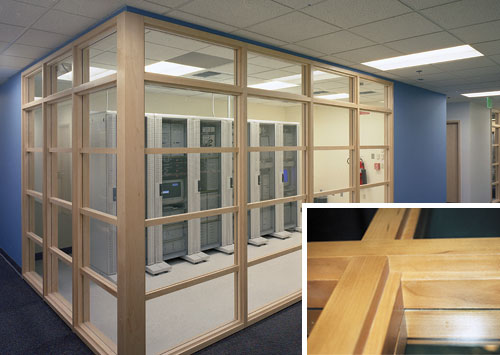Fire-Rated Glass and Framing Deliver Design Goals
Schools. There is an ongoing debate in the education community about what constitutes adequate fire protection. Do sprinkler systems provide sufficient protection against fire, or are specialty fire-resistant building materials also needed? According to National Fire Protection Association data, one in ten sprinkler systems fails to perform adequately, largely because of human error. There is, therefore, a very good argument to be made for having complementary passive protection in the form of fire rated materials such as fire-rated glazing. Ceramic glass with fire-ratings up to three hours, high-impact safety ratings and sound reduction in IGUs can offer fire protection and, because it looks like ordinary glass, bring in welcome light. For fire-separation areas such as corridors and stairwells, transparent wall panels with a heat barrier rating can prevent the transfer of radiant and conductive heat. These materials also help improve visibility and security, and create open building designs.
Acoustical barrier. Since single pane fire-rated ceramic glass units offer little acoustic barrier, design professionals requiring sound proofing for classrooms or meeting rooms should consider IGUs, or products with multiple layers of glass such as transparent wall units.
Complying with energy codes. Again, single layer ceramic glass will not significantly prevent heat loss or heat gain. IGUs incorporating fire-rated glazing, where needed, should be considered for compliance with energy codes.
Framing Materials
The specification of fire-rated glazing should also take into account the fire rating of the framing materials. To ensure adequate fire protection, the framing should carry a fire rating at least equal to that of the glazing. As with the new developments in ceramic glass that expand design options, manufacturers offer fire-rated framing choices that range from hardwoods to sleek, narrow profile steel and aluminum. All of these provide an aesthetic advantage over traditional bulky hollow metal steel frames.
Hardwood frames. A welcome alternative to traditional hollow metal steel frames is one manufacturer's fire-rated hardwood frame series with fire ratings from 20 to 60 minutes achieved by bonding hardwood faces to an engineered core. Tested for positive pressure and as a heat barrier, it is available in a variety of species.
 |
This corporate interior has fire-rated hardwood frames and fire-resistant transparent panels. Photo courtesy of Technical Glass Products |
Â
Aluminum frames. When combined with fire-rated glass that is tested for heat barrier and positive pressure, fire-rated aluminum frames can allow for large glazing areas in fire separations. One manufacturer offers narrow aluminum profile frames with fire-ratings up to 60 minutes. (See Sidebar "Art Institute of Chicago Modern Wing Relies on Fire-Rated Glass and Frames.")
 |
Example of extruded fire-rated aluminum framing with crisp edges and narrow sightlines Photo courtesy of Technical Glass Products |









